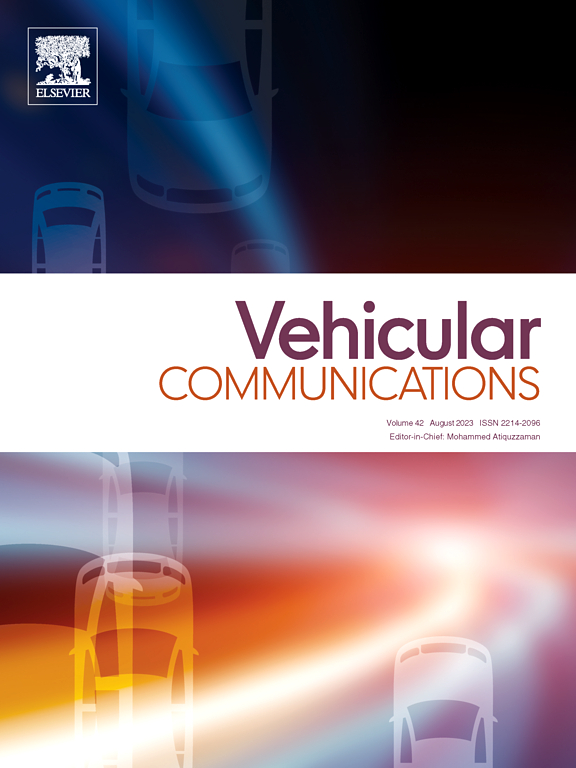DAME-IoV: Dynamic Adaptive Multi-Edge authentication protocol with post-quantum security for Internet of Vehicles
IF 6.5
2区 计算机科学
Q1 TELECOMMUNICATIONS
引用次数: 0
Abstract
The Internet of Vehicles (IoV) faces increasing security challenges with the advent of quantum computing, which threatens traditional cryptographic protocols while demanding efficient authentication mechanisms for large-scale vehicle networks. This paper presents DAME-IoV, a Dynamic Adaptive Multi-Edge authentication protocol that provides post-quantum security while leveraging edge computing capabilities for enhanced performance. Our framework introduces three key innovations: (1) a lightweight post-quantum authentication scheme optimized for vehicular networks, featuring lattice-based cryptography with dynamic parameter adjustment; (2) an adaptive security mechanism that dynamically adjusts protection levels based on real-time threat assessment and resource availability; and (3) an efficient edge-assisted processing architecture that enables scalable authentication through intelligent caching and batch verification. We provide formal security proofs demonstrating the protocol's resistance to quantum attacks while maintaining conditional privacy preservation. Extensive experimental evaluation on a prototype implementation shows that DAME-IoV achieves 45% lower computational overhead, 35% reduced memory footprint, and 40% better scaling efficiency compared to existing solutions. Performance analysis under various network conditions demonstrates that our framework maintains authentication latency below 50 ms while supporting over 1000 concurrent vehicle requests. The proposed solution successfully addresses the critical challenges of post-quantum security, scalability, and efficiency in IoV environments, providing a practical foundation for securing next-generation vehicular networks.
基于后量子安全的车联网动态自适应多边缘认证协议
随着量子计算的出现,车联网(IoV)面临着越来越大的安全挑战,这对传统的加密协议构成了威胁,同时也需要大规模车辆网络的高效认证机制。本文介绍了DAME-IoV,这是一种动态自适应多边缘认证协议,在利用边缘计算能力增强性能的同时提供后量子安全。我们的框架引入了三个关键创新:(1)针对车载网络优化的轻量级后量子认证方案,具有基于格的动态参数调整加密;(2)基于实时威胁评估和资源可用性动态调整防护等级的自适应安全机制;(3)高效的边缘辅助处理架构,通过智能缓存和批量验证实现可扩展的身份验证。我们提供了正式的安全证明,证明了该协议对量子攻击的抵抗力,同时保持了有条件的隐私保护。对原型实现的广泛实验评估表明,与现有解决方案相比,DAME-IoV的计算开销降低了45%,内存占用减少了35%,扩展效率提高了40%。在各种网络条件下的性能分析表明,我们的框架在支持超过1000个并发车辆请求的同时,将身份验证延迟保持在50毫秒以下。该解决方案成功解决了车联网环境中后量子安全、可扩展性和效率方面的关键挑战,为确保下一代汽车网络的安全提供了实践基础。
本文章由计算机程序翻译,如有差异,请以英文原文为准。
求助全文
约1分钟内获得全文
求助全文
来源期刊

Vehicular Communications
Engineering-Electrical and Electronic Engineering
CiteScore
12.70
自引率
10.40%
发文量
88
审稿时长
62 days
期刊介绍:
Vehicular communications is a growing area of communications between vehicles and including roadside communication infrastructure. Advances in wireless communications are making possible sharing of information through real time communications between vehicles and infrastructure. This has led to applications to increase safety of vehicles and communication between passengers and the Internet. Standardization efforts on vehicular communication are also underway to make vehicular transportation safer, greener and easier.
The aim of the journal is to publish high quality peer–reviewed papers in the area of vehicular communications. The scope encompasses all types of communications involving vehicles, including vehicle–to–vehicle and vehicle–to–infrastructure. The scope includes (but not limited to) the following topics related to vehicular communications:
Vehicle to vehicle and vehicle to infrastructure communications
Channel modelling, modulating and coding
Congestion Control and scalability issues
Protocol design, testing and verification
Routing in vehicular networks
Security issues and countermeasures
Deployment and field testing
Reducing energy consumption and enhancing safety of vehicles
Wireless in–car networks
Data collection and dissemination methods
Mobility and handover issues
Safety and driver assistance applications
UAV
Underwater communications
Autonomous cooperative driving
Social networks
Internet of vehicles
Standardization of protocols.
 求助内容:
求助内容: 应助结果提醒方式:
应助结果提醒方式:


